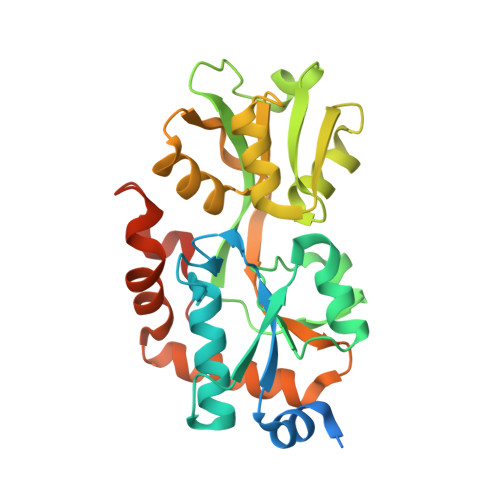An ATP-binding cassette-type cysteine transporter in Campylobacter jejuni inferred from the structure of an extracytoplasmic solute receptor protein.
Muller, A., Thomas, G.H., Horler, R., Brannigan, J.A., Blagova, E., Levdikov, V.M., Fogg, M.J., Wilson, K.S., Wilkinson, A.J.(2005) Mol Microbiol 57: 143-155
- PubMed: 15948956
- DOI: https://doi.org/10.1111/j.1365-2958.2005.04691.x
- Primary Citation of Related Structures:
1XT8 - PubMed Abstract:
Campylobacter jejuni is a Gram-negative food-borne pathogen associated with gastroenteritis in humans as well as cases of the autoimmune disease Guillain-Barr¨¦ syndrome. C. jejuni is asaccharolytic because it lacks an active glycolytic pathway for the use of sugars as a carbon source. This suggests an increased reliance on amino acids as nutrients and indeed the genome sequence of this organism indicates the presence of a number of amino acid uptake systems. Cj0982, also known as CjaA, is a putative extracytoplasmic solute receptor for one such uptake system as well as a major surface antigen and vaccine candidate. The crystal structure of Cj0982 reveals a two-domain protein with density in the enclosed cavity between the domains that clearly defines the presence of a bound cysteine ligand. Fluorescence titration experiments were used to demonstrate that Cj0982 binds cysteine tightly and specifically with a K(d) of approximately 10(-7) M consistent with a role as a receptor for a high-affinity transporter. These data imply that Cj0982 is the binding protein component of an ABC-type cysteine transporter system and that cysteine uptake is important in the physiology of C. jejuni.
Organizational Affiliation:
Structural Biology Laboratory, Department of Chemistry, University of York, York, YO10 5YW, UK.
















